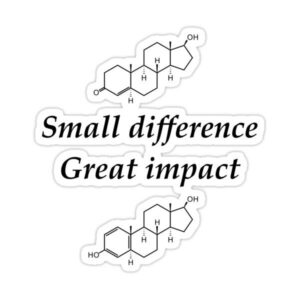When it comes to the male and female brain, size does matter—but maybe not in the way you’d think.
Before deep diving into the debate about women and men, I just want to explain why there are different perspectives from both sides, how we’re wired and the reasoning behind it.
The differences between men’s and women’s brains, especially in how they think, develop, and mature, are rooted in both biological and social factors. Here’s a breakdown of some key areas where these differences appear and how they impact emotional, physical, and cognitive development:

1. Brain Structure and Function
- Size and Structure:
Men’s brains are generally larger in volume, but women’s brains are more densely packed with neurons and have a thicker cerebral cortex. The cerebral cortex, associated with complex thinking, gives women an edge in some cognitive functions. Importantly, brain size does not correlate with intelligence; instead, different structures support unique strengths in processing. - Connectivity:
Women’s brains exhibit greater connectivity between the left and right hemispheres, enhancing multitasking, emotional processing, and intuitive thinking. In contrast, men’s brains have more connections within each hemisphere, which boosts spatial awareness and logical reasoning. These differences often explain the distinct ways men and women approach problem-solving and emotional situations.
2. Thinking and Processing Styles
- Analytical vs. Intuitive Thinking:
Men are often associated with analytical, focused thinking styles. This could stem from higher testosterone levels during brain development, which supports spatial and systematic tasks. Women, influenced by higher estrogen levels, tend to favor empathizing and intuitive thinking, making them especially skilled at recognizing emotions and social cues. - Emotional Regulation:
Women’s limbic system—the brain’s emotion-processing center—is more active than men’s. This results in greater emotional memory, empathy, and detail-oriented emotional responses. Men, however, often focus on solving problems directly, sometimes bypassing emotional nuance.
3. Developmental Timelines
- Emotional Maturity:
Girls usually reach emotional maturity earlier than boys due to differences in brain development rates and hormonal influences. This early maturation means young women are often more attuned to emotions and interpersonal dynamics, while boys may develop these skills later in adolescence. - Physical Development and Puberty:
Puberty begins earlier for girls (around ages 10-12) and progresses in tandem with emotional and physical maturity. Boys typically start puberty later (around ages 12-14), and their physical maturity often outpaces emotional development. The gradual development of brain areas like the prefrontal cortex, which governs planning and decision-making, also contributes to this timeline. - Cognitive Maturity:
Both men’s and women’s brains continue developing into their mid-20s. Women generally reach full cognitive maturity earlier, around ages 21-23, including the prefrontal cortex, which handles impulse control, emotional regulation, and long-term planning. Men typically complete this process between ages 24-26, which influences their decision-making, risk-taking, and emotional responses during their younger years.
4. Hormonal Influences and Lifelong Changes
- Testosterone and Estrogen:
These key hormones influence brain function and behavior from adolescence onward. Testosterone enhances traits like aggression and competitiveness in men, while estrogen fosters nurturing, empathy, and social bonding in women. These hormonal effects play a significant role in shaping personality, relationships, and personal goals for each gender. - Stress Responses:
Men and women handle stress differently. Men are more likely to engage in “fight or flight” responses, while women often adopt “tend and befriend” strategies. This difference stems from oxytocin—a bonding hormone released in higher amounts in women during stress—which encourages connection and seeking social support as a coping mechanism. top: Testosterone
top: Testosterone
bottom: Estrogen
5. Social and Environmental Factors
- Alongside biology, cultural expectations shape how men and women think and act. Men are often encouraged to be assertive and stoic, which can lead to a more analytical, problem-solving approach, while women are generally encouraged to express emotions, which reinforces empathy and emotional intelligence.
These differences aren’t strict rules but tendencies that help explain some of the varied ways men and women think, process emotions, and mature. Biology lays a foundation, but life experiences, personal choices, and (lately mostly) social influences play just as big a role in how individuals develop.
Now that we’ve covered the basics, let’s get to the fun part – spilling the matcha!